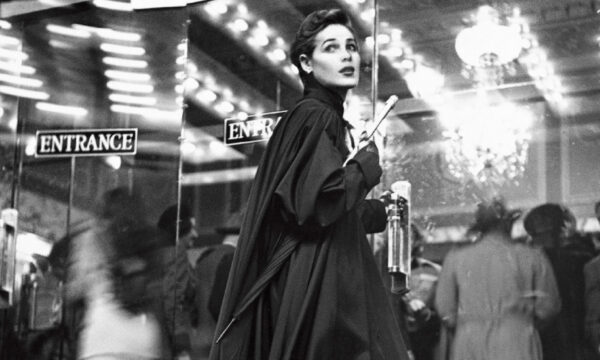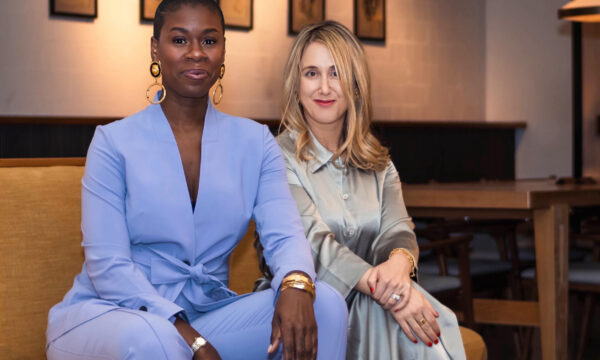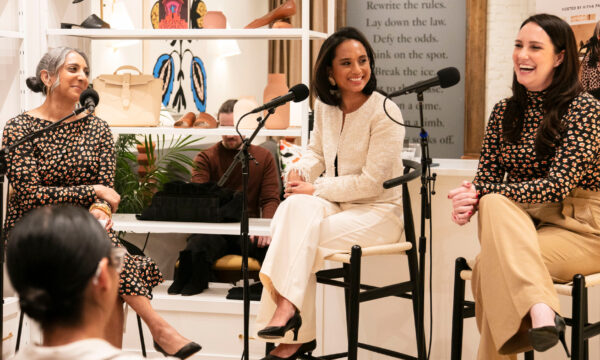
How to Talk About Your Divorce—and When Not To
Divorce memoirs like Maggie Smith’s help women tell their own stories.
Want more M Dash?
Sign up for our weekly newsletter.
Thank you!
Stevie McFadden refers to her divorce as “a divorce with a capital ‘D.’” “Our marriage fell apart abruptly and unexpectedly,” she explains. “Did I perhaps contribute to that? Of course I did. Nobody’s blameless.” But one of the many things that frustrates McFadden is that she wasn’t able to participate in the unwinding of her marriage. That’s something her ex-husband took from her. “I eventually realized that the power that I did have was in the narrative I told myself and others.”
McFadden’s not alone. When the chaos of divorce makes everything feel out of control, many women find a sense of agency in telling their story. Or, in the case of poet and author Maggie Smith, writing a book about it. Smith is adamant that her divorce memoir, You Could Make This Place Beautiful, is not a “tell all.” “If you’re speaking for yourself, which is really all you can responsibly do, you don’t have access to the whole story,” she explains. “Keeping it narrow felt not only like the most doable option, but also the most ethical option.”
Like Smith, McFadden felt that some parts of her divorce narrative were off limits—at least temporarily. She had to remind herself that her divorce and marriage were two different things. “My ex-husband made some really horrific choices, but his choices are not who he always was,” explains McFadden, who admits that anger is a much safer emotion for her than grief. “I created this mental image for myself. Every time I’d have a kind thought or a good memory, I imagined putting it in a box that I kept up high on a shelf. I told myself, ‘I will get this down when I’m ready, when it won’t be contaminated with my anger.’”
While U.S. divorce rates are notoriously hard to calculate, the latest data says about 43% of first marriages end in divorce. Still, many women feel alone during this transition. That’s why Oona Metz, a Boston-based psychotherapist who went through her own divorce 15 years ago, runs divorce support groups for women. Metz likes to remind clients that every divorce narrative contains two story arcs. “There’s the legal arc, the dissolution of the marriage contract, and the emotional arc, the fallout from dealing with that dissolution,” she explains. “Sometimes, those two story arcs line up really nicely, because the legal process drags on for such a long time that people are emotionally okay by the time the divorce is official.” That’s not always the case, but either way, it helps to deal with one story at a time.
The vocabulary of divorce is evolving, too, albeit slowly. Heidi Webb, an attorney who created the Consilium Process, a new approach to family law, takes some of her cues from business. “We talk about businesses reorganizing through bankruptcy,” she explains. “Why can’t we talk about families restructuring through divorce?” This is especially important, says Webb, when children are involved. “At the end of a divorce case, the marriage is over, but the family goes on.”
Divorce is ultimately as much about beginnings as it is about endings. Smith, for instance, has written that the best things to happen to her individually were the worst things to happen to her marriage. Webb’s work focuses on helping couples—and the courts—understand this possibility. She often explains that the word “divorce” comes from the Latin “diverte,” meaning to separate or turn away, while “restructure” comes from “structura,” meaning to fit together or build. “That’s really what you’re doing when you divorce,” Webb explains. “You’re creating something new.”
how to talk about your divorce—or not
Create a “conversation bullseye.”
“The gift that we offer when we tell the truth is that we make other people feel less alone in their human experience,” says Smith. That said, Metz reminds people that you don’t have to share everything with everyone. She offers a helpful visual: Picture a bullseye with concentric circles. The people at the center are your family and closest friends—share as much as you want with them. The people in the outer circle—the lacrosse coach, the mailman, your coworkers—don’t need to know the intimate details. These folks only need a logistical update: who’s picking up the kids, where the mail should be forwarded, etc. You can tell the folks in the middle circle something in between.
Learn how to pivot.
For that outer circle, Metz also suggests developing a one-line response to questions and then a quick pivot. “When you pause, you invite questions,” she explains. If someone asks you about your divorce and you don’t want to share details with them, just say something like, “Yes, we’re getting divorced, and the kids and I are doing okay,” and then pivot. “That’s a cool jacket. Where’d you get it?”
Protect yourself with “oven mitts.”
“If you’re writing about loss, grief, abuse, or anything that cuts close to the bone, that material is really hot,” explains Smith, who also teaches writing. She tells her students to use the writing craft as oven mitts to hold that “hot” material without “burning” themselves. In her own memoir, she used this technique by sometimes referring to herself in the third person, as the character “the wife.” It’s what McFadden did with her box of memories. You can do the same in your journal or in the story you tell yourself.
Find support.
“Every divorce is unique, but the feelings that people have going through divorce are often very similar,” says Metz. That’s why she offers divorce support groups, but individual therapy can be a great outlet, too. “When I was going through my divorce, therapy day was my favorite day of the week,” says McFadden. She also built her own supportive scaffolding by relying on a principle from her work in change-management that involves four sources of help:
- Someone who’s been through it and is on the other side (sort of like a sponsor)
- Someone who’s currently going through it and can relate to the the emotional extremes you are experiencing
- Someone who loves you unconditionally (like your parents) so you can come undone in front of them without worrying about being judged
- Someone who has had a very different experience of marriage or divorce and can challenge some of your assumptions and points of view
Whichever form of support you choose, the goal is to get to the place where you don’t want to participate in it anymore. “The goal is for you to say, ‘Instead of going to my divorce group, I want to go to a pottery class on Wednesday nights,’ or ‘I want to start dating on Wednesday nights,’” explains Metz. “You want to get to a place where you have bigger and better things to do than to talk about your divorce.”











